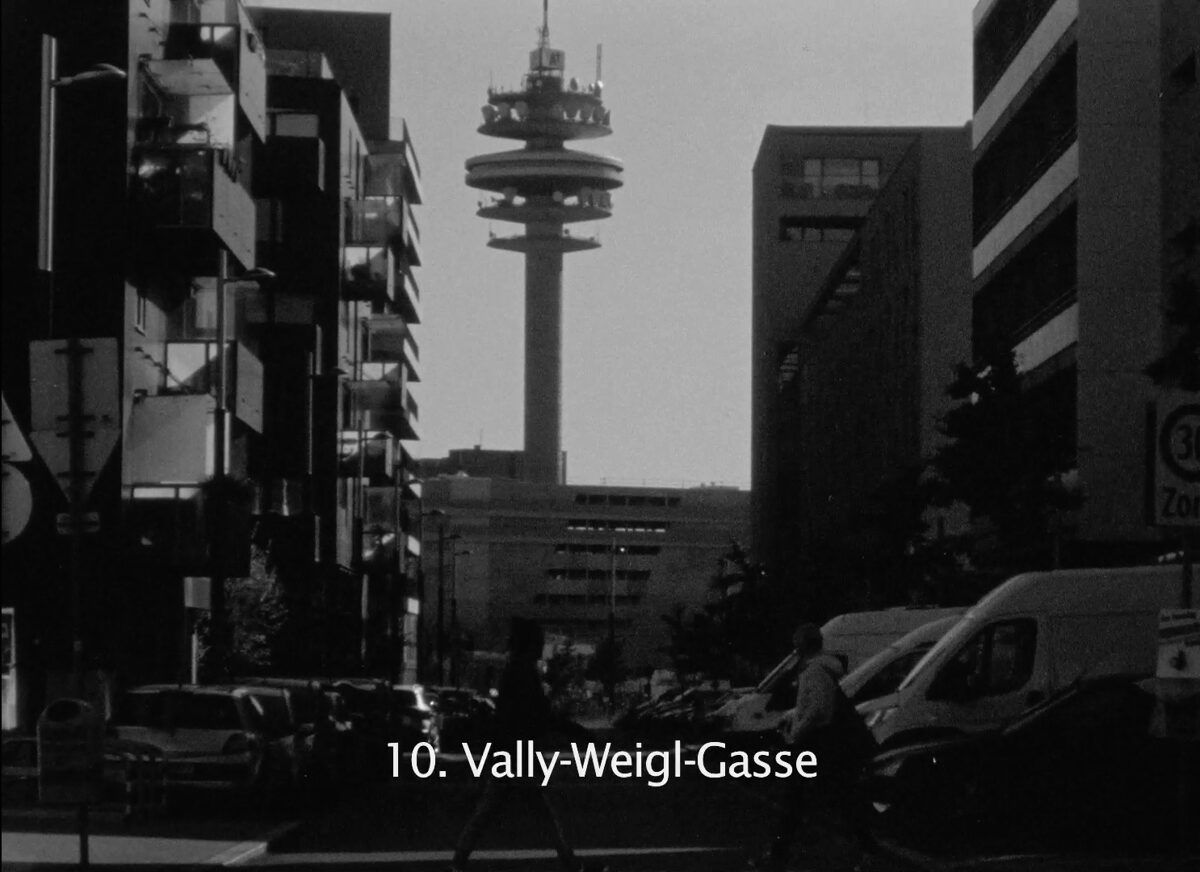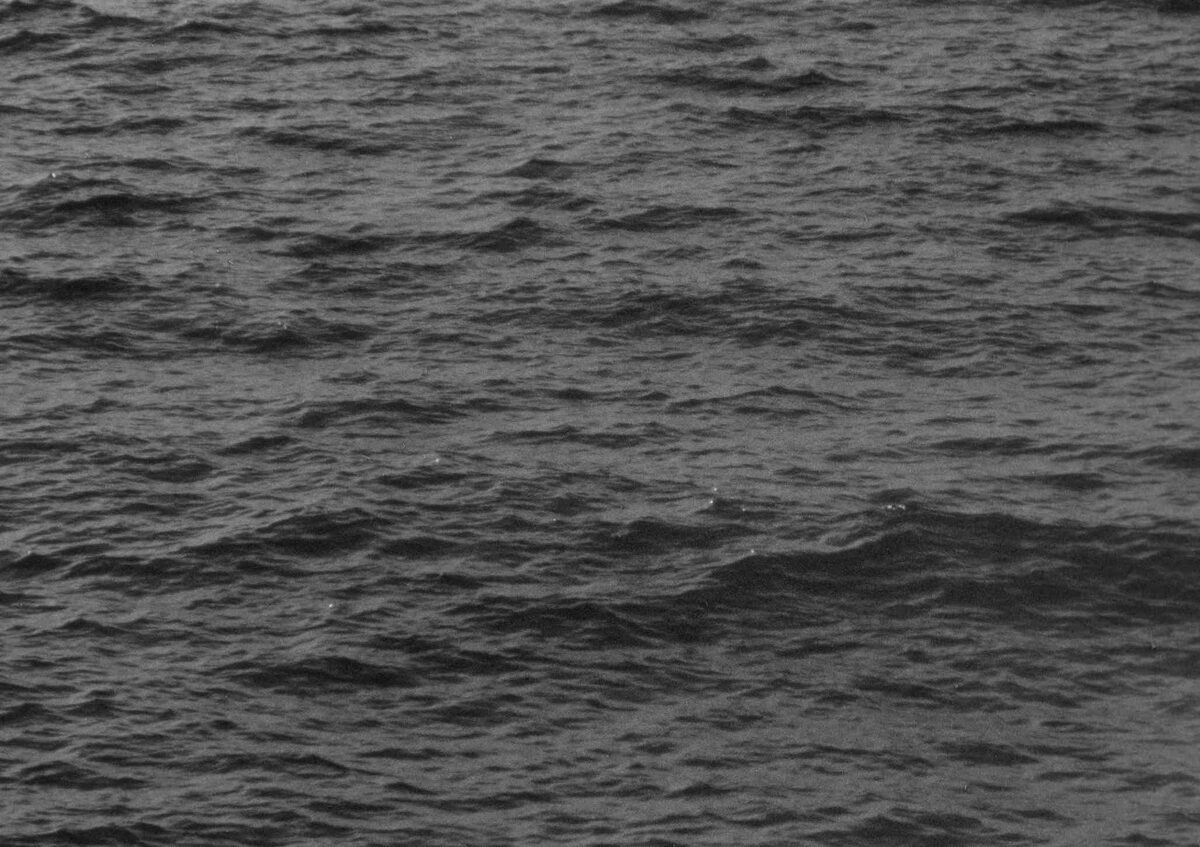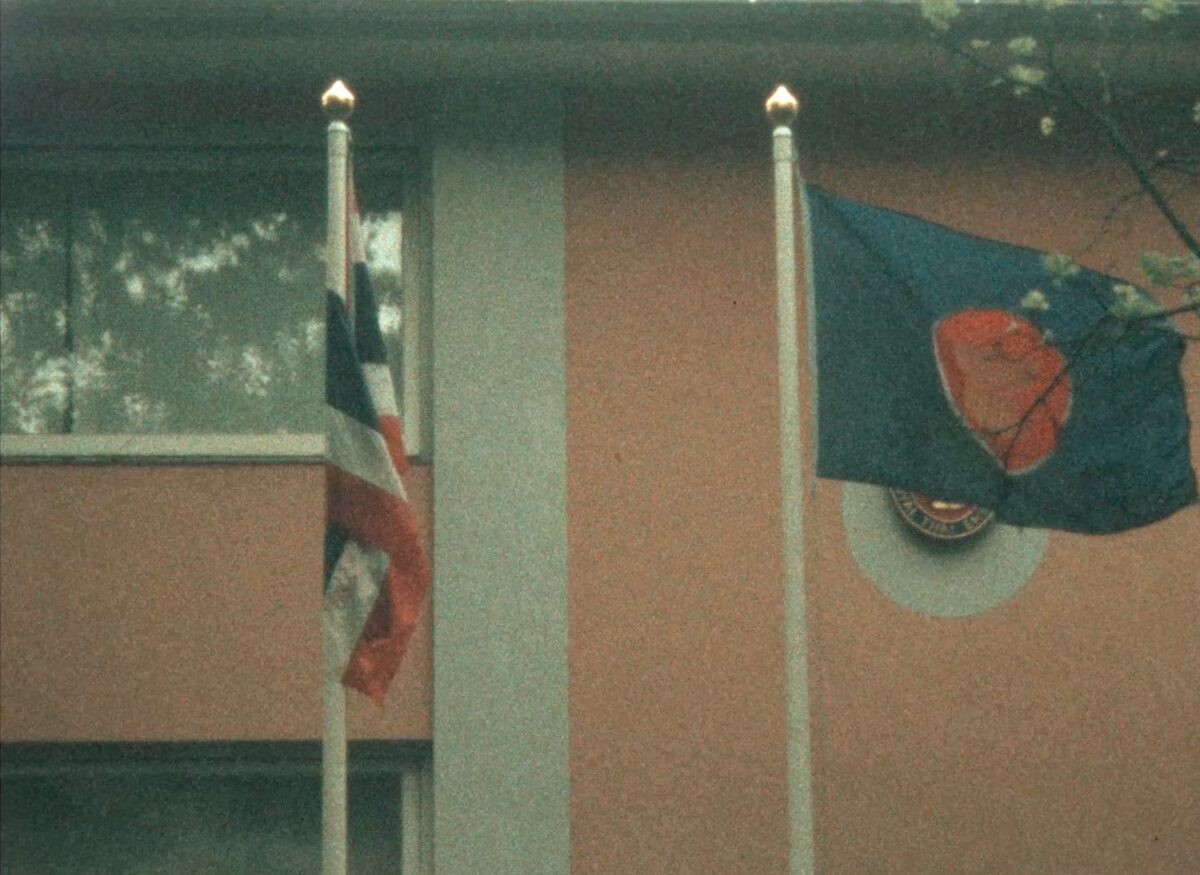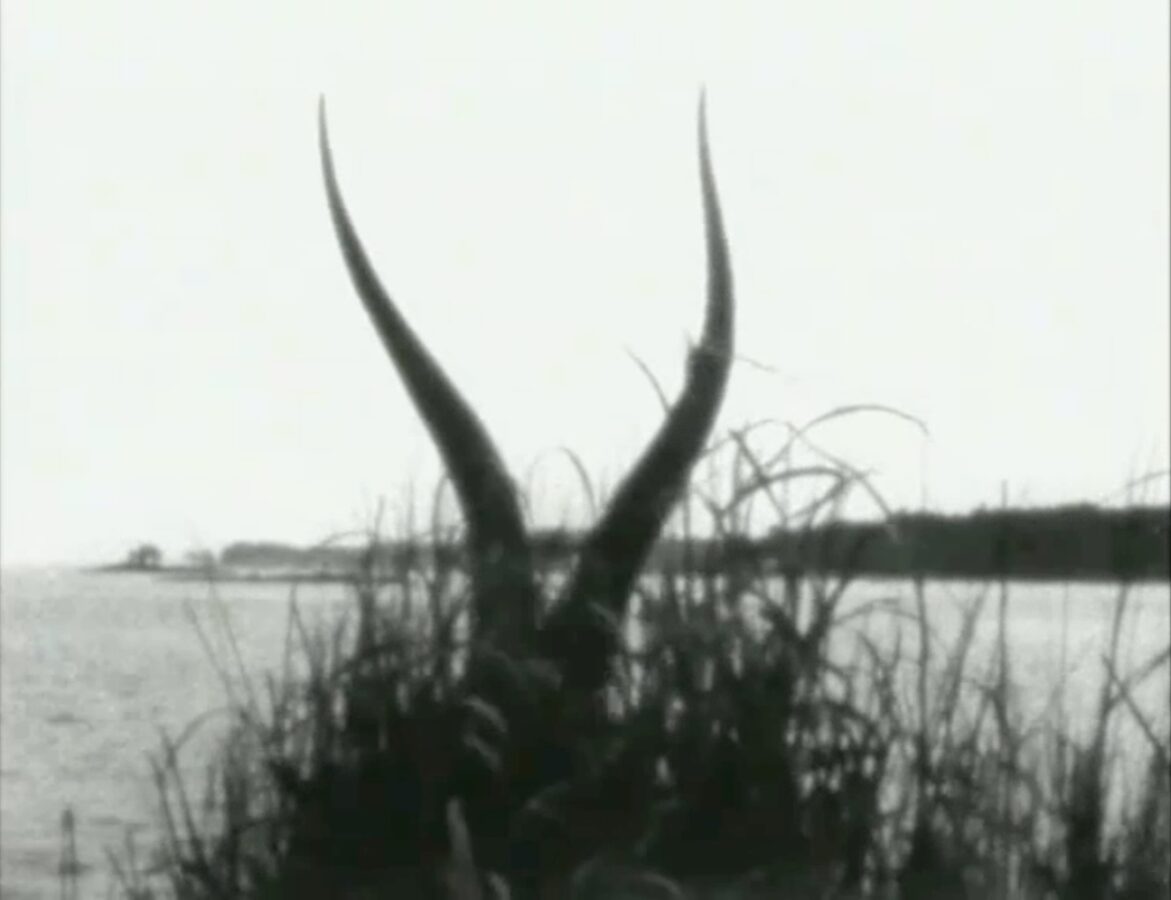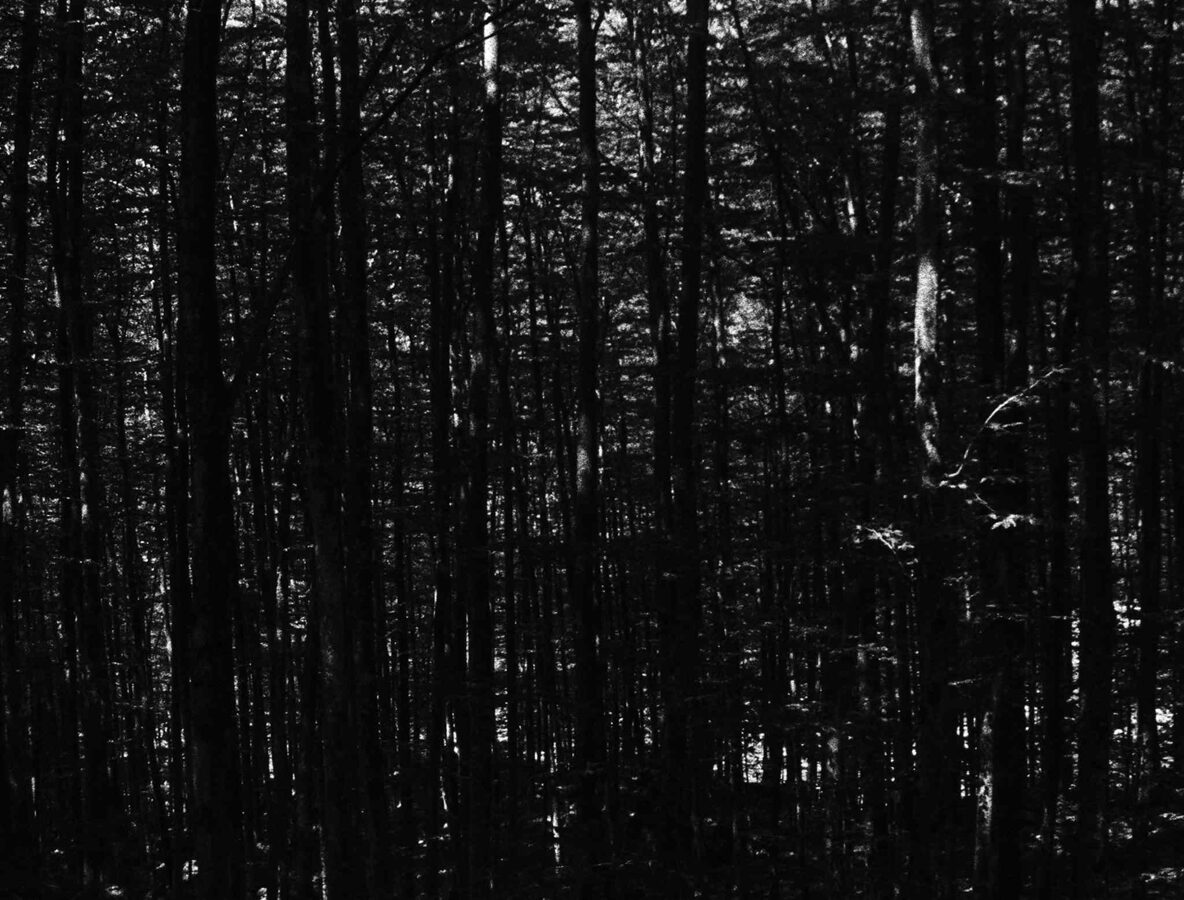Directors, Producers, Cinematographers, Editors: Aleksandra Kolodziejczyk and Karl Wratschko
Runtime: 1 minutes 12 seconds
Original Format: Super 16mm
Screening Format: 16mm and DCP, b&w, silent
SYNOPSIS:
Vienna in the year 2024: A camera moves through an inconspicuous alley in Hietzing, the 13th district of Vienna (postal code 1130). The shot is in black and white, shaky, and the image is upside down. It ends with a brief shot of the street sign. The camera pans quickly away and is lost in the black. The street is named after a proponent of anti-Semitic and misogynist theories.
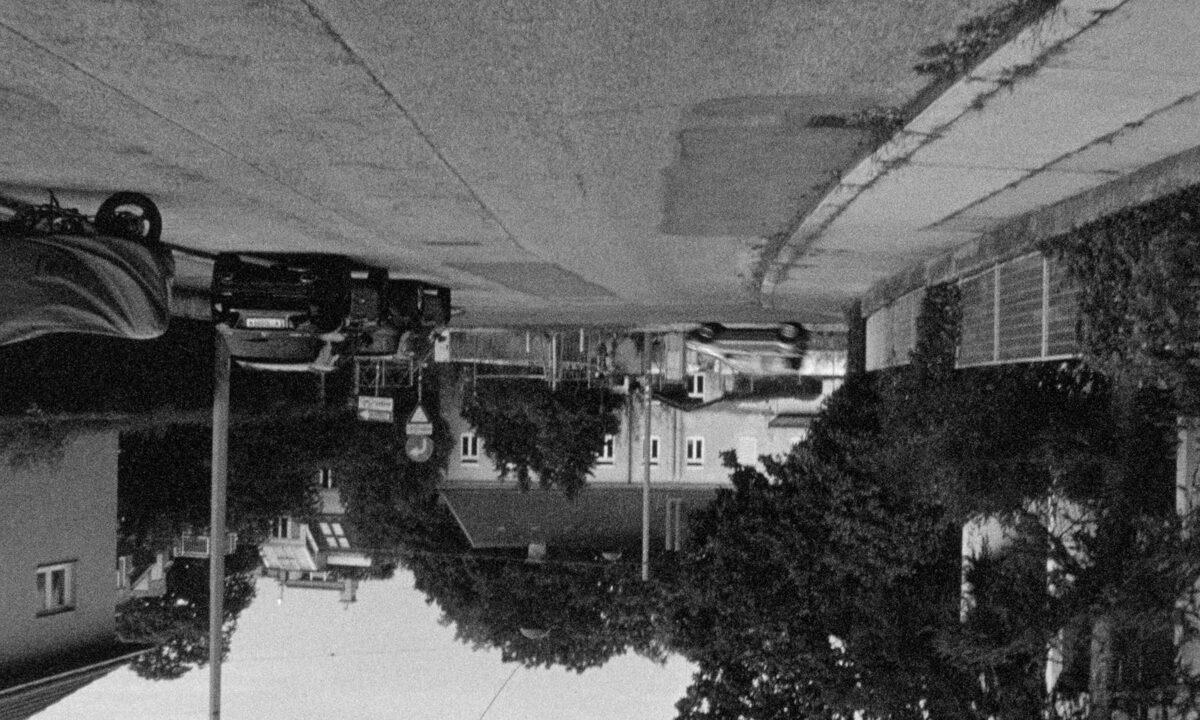
1I12
Directors, Producers, Cinematographers, Editors: Aleksandra Kolodziejczyk and Karl Wratschko
Runtime: 3 minutes 15 seconds
Original Format: 16mm, b&w, silent
Screening Format: 16mm and DCP
With the support of the Cultural Office of the City of Innsbruck
In the city of Innsbruck, about 92% of all streets named after people are named after men, while only 8% of the streets are named after women. The film 1I12 documents all the steets of Innsbruck named after women. One by one, they appear in the viewer's field of vision as we gradually approach the city centre. 1I12 is a kind of inventory, a contribution to an active culture of remembrance and gender equality, as well as a critical examination of the representation of women in public space, which can also stand symbolically for other areas of society. This is the third and final part of the "Presence" triology (Presence, 1I15 and 1I12).
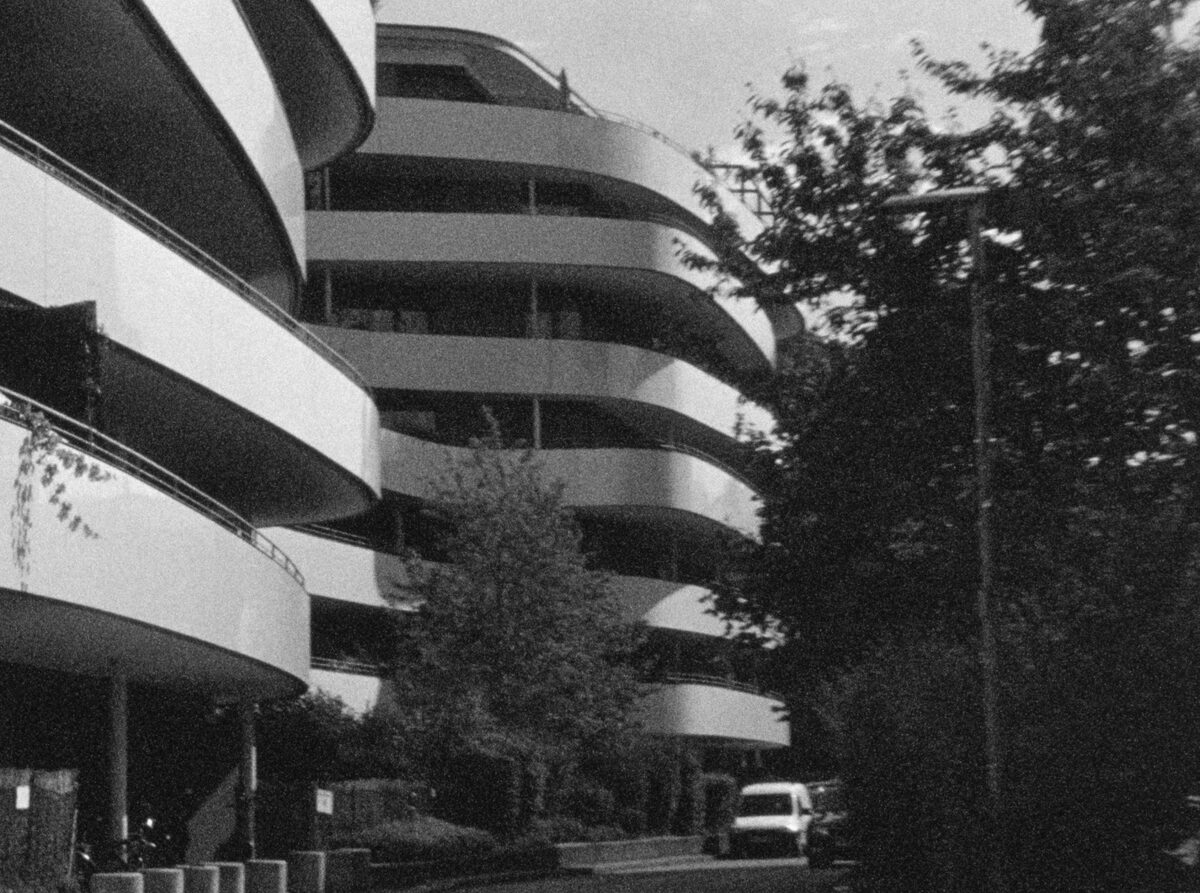
THE PARRHASIUS EFFECT
Austria 2023
A film by Karl Wratschko
Runtime:
3 minutes 43 seconds
Original Format: Super 16mm
Screening Format:
DCP, color,
silent
With
the support of the Cultural Department of the City of Vienna – MA 7
SYNOPSIS:
'The Parrhasius Effect" deals with the perception of reality in the context of cinema and discusses an ideologically charged issue in relation to cinema architecture and practice using two examples from the city of Vienna. The film is based on an ancient legend and raises the question of when a film is perceived as a film.
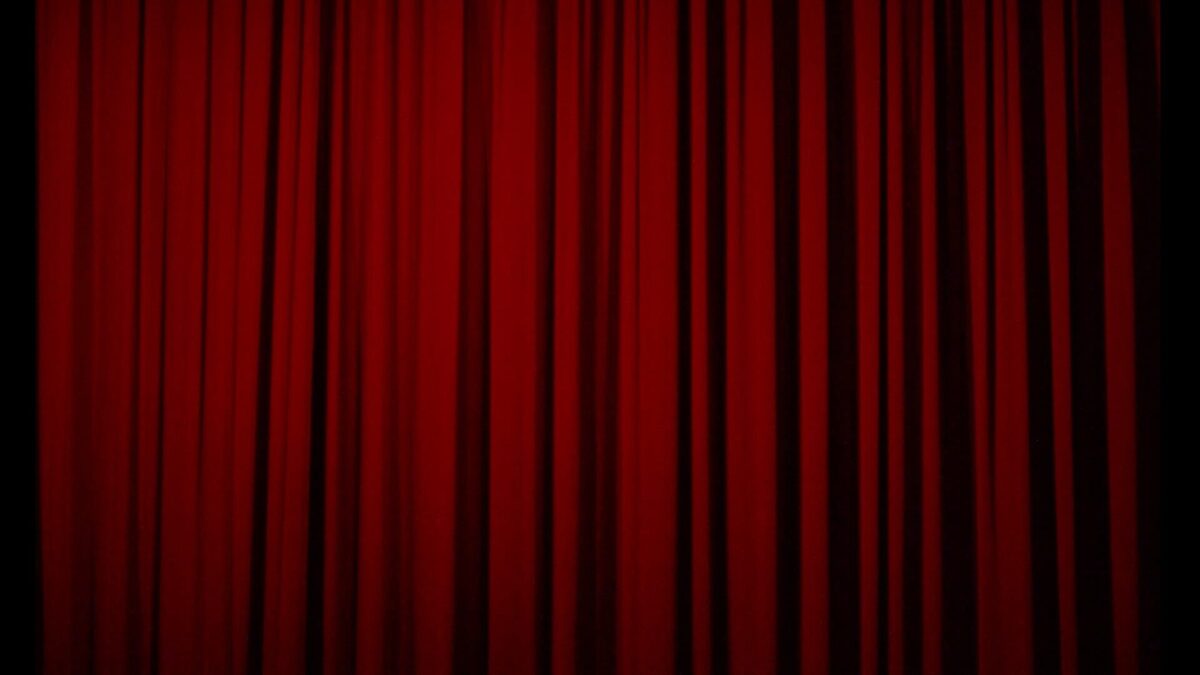
A DIALOGUE
Director, Producer,
Cinematographer, Editor: Karl
Wratschko
Runtime: 4
minutes 44 seconds
Original Format: 4K, color, sound
Screening Format: DCP
With
the support of the Cultural Department of the City of Vienna – MA 7
SYNOPSIS:
A conversation during a bus ride from Jerusalem to Ramallah in the summer of 2022.
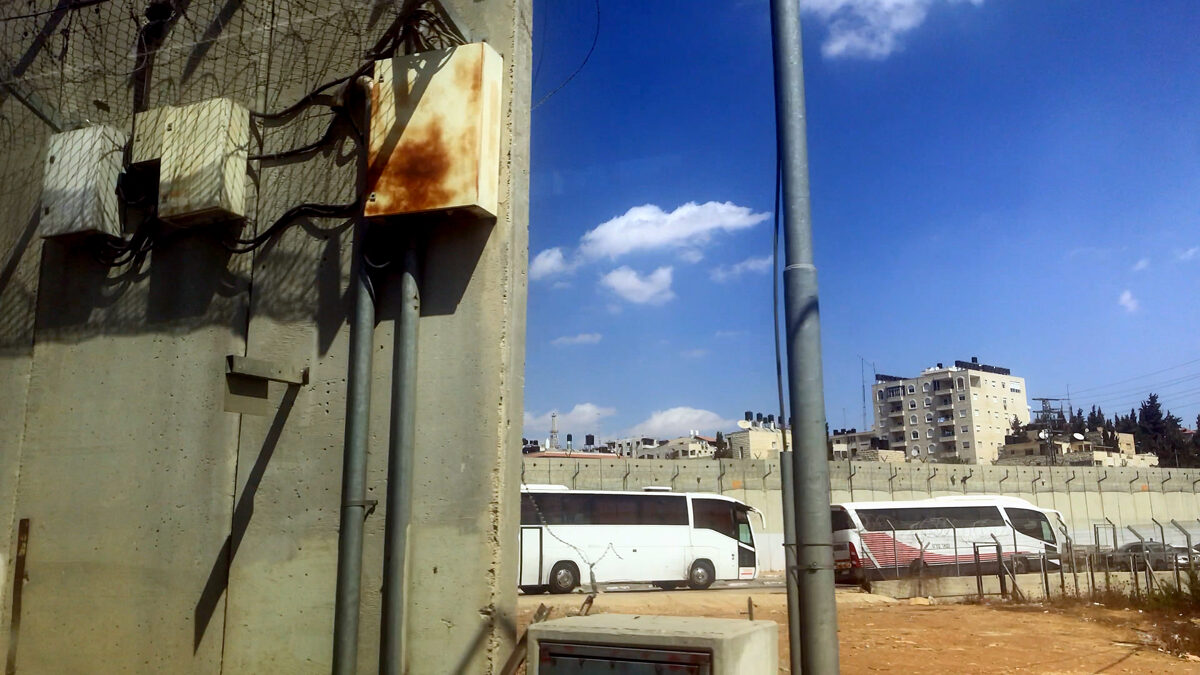
more traces
Directors, Producers,
Cinematographers: Aleksandra Kolodziejczyk and Karl
Wratschko
Post-Production: Johannes Gierlinger
Runtime: 3
minutes 28 seconds
Original Format: 16mm, color & b/w,
silent
Screening Format: 16mm and DCP
World premiere: Manofim – Festival of Contemporary Art, Jerusalem
more traces negotiates the global phenomenon of the climate crisis on a local level, in the context of a single city. The short film portrays animal sculptures in the public space of the city of Vienna. Shot over two days in the Viennese winter of 2021/22, more traces focuses on concrete sculptures of animals native to a tropical climate. Perhaps this is an accurate glimpse into the not-too-distant future, when people will only know elephants, kangaroos or hippos from zoos, pictures and sculptures? accurate glimpse into the not-too-distant future in which people will only know elephants, kangaroos or hippos from zoos, pictures and sculptures?
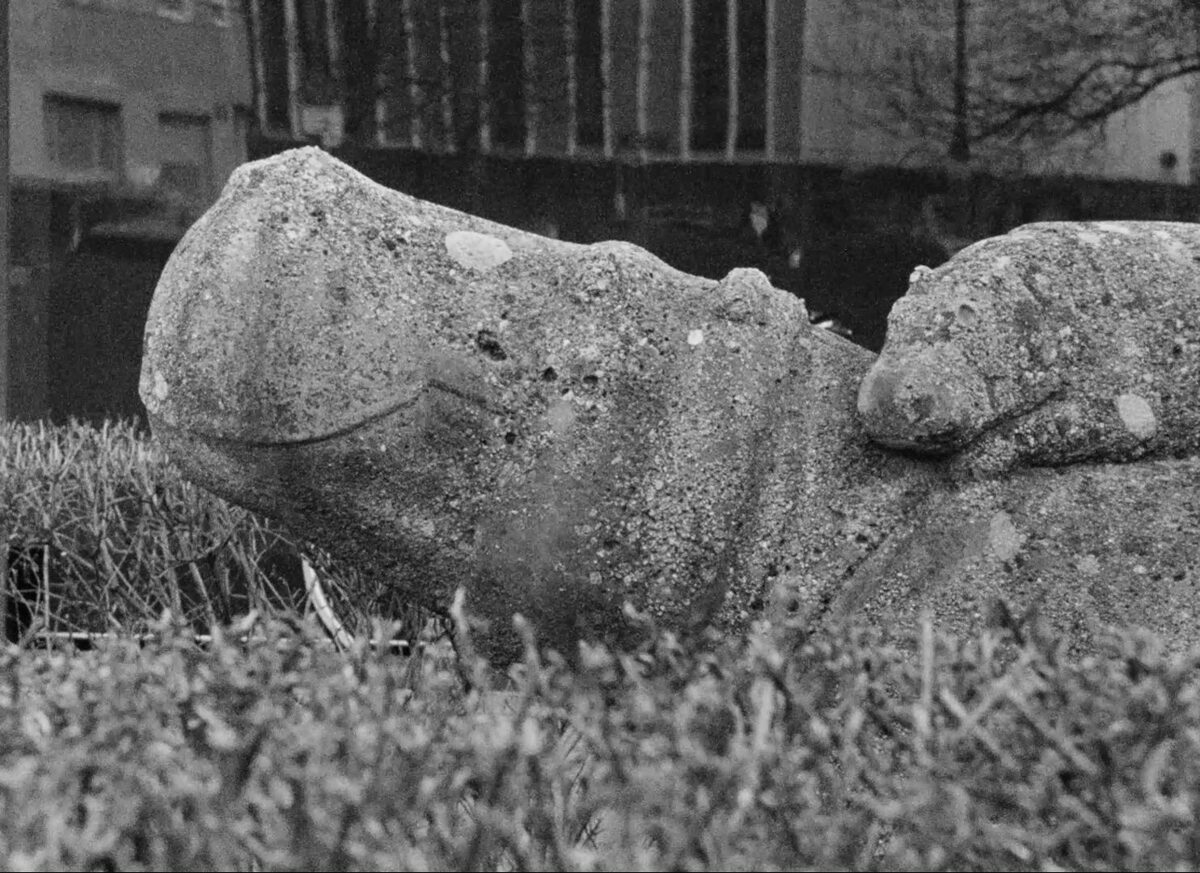
Mediterannean
Austria 2022
Directors,
Producers, Cinematographers: Aleksandra Kolodziejczyk und Karl
Wratschko
Post-Production and Sound-Design: Hannes Ziegerhofer
Runtime: 2
Minuten 26 Sekunden
Original Format: 16mm, color, sound
Screening Format: 16mm and DCP
With the support of the Cultural Department of the City of Vienna – MA 7 and Foreign Film Scholarship of the City of Graz
World premiere: Kassel Dokfest
SYNOPSIS:
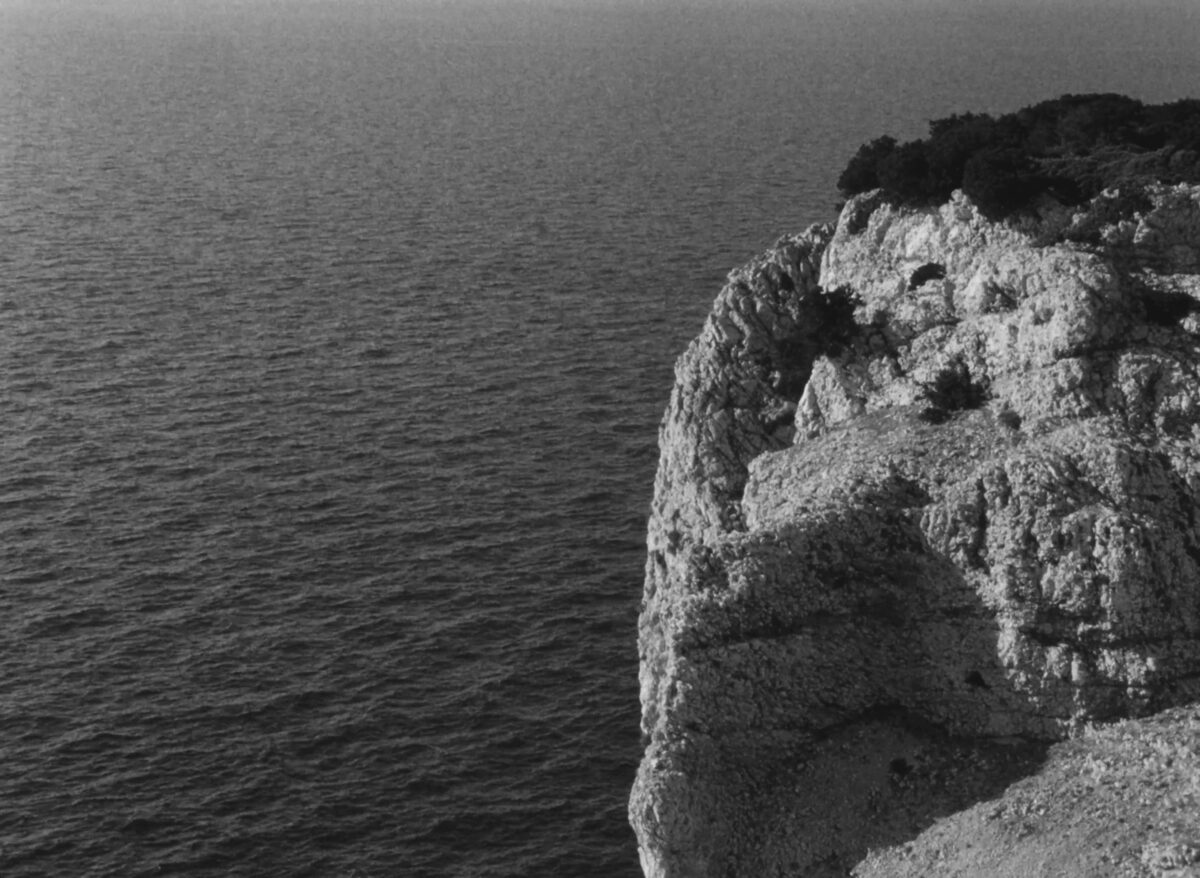
traces
Austria 2021
Directors,
Producers, Cinematographers: Aleksandra Kolodziejczyk and Karl
Wratschko
Post-Production: Johannes Gierlinger
Runtime: 3
minutes 26 seconds
Original Format: 16mm, b&w/color,
silent
Screening Format: 16mm and DCP
With
the support of the Cultural Department of the City of Vienna – MA 7
and the Otto Mauer Fund
Acquired by the City
of Vienna for their contemporary art collection (Wien
Museum MUSA)
and the Regional Government of Styria (Neue Galerie Graz)
World premiere: Manofim – Festival of Contemporary Art, Jerusalem
SYNOPSIS:
traces negotiates the global phenomenon of the climate crisis on a local level, in the context of a single city. The short film portrays all the sculptures of arctic animals in the public space of the city of Vienna. Shot during the hottest summer on record, traces focuses on polar bears, seals and penguins in an extremely hostile environment. Perhaps this is an accurate glimpse into the not too distant future, when people will only know polar animals from zoos, pictures and sculptures?
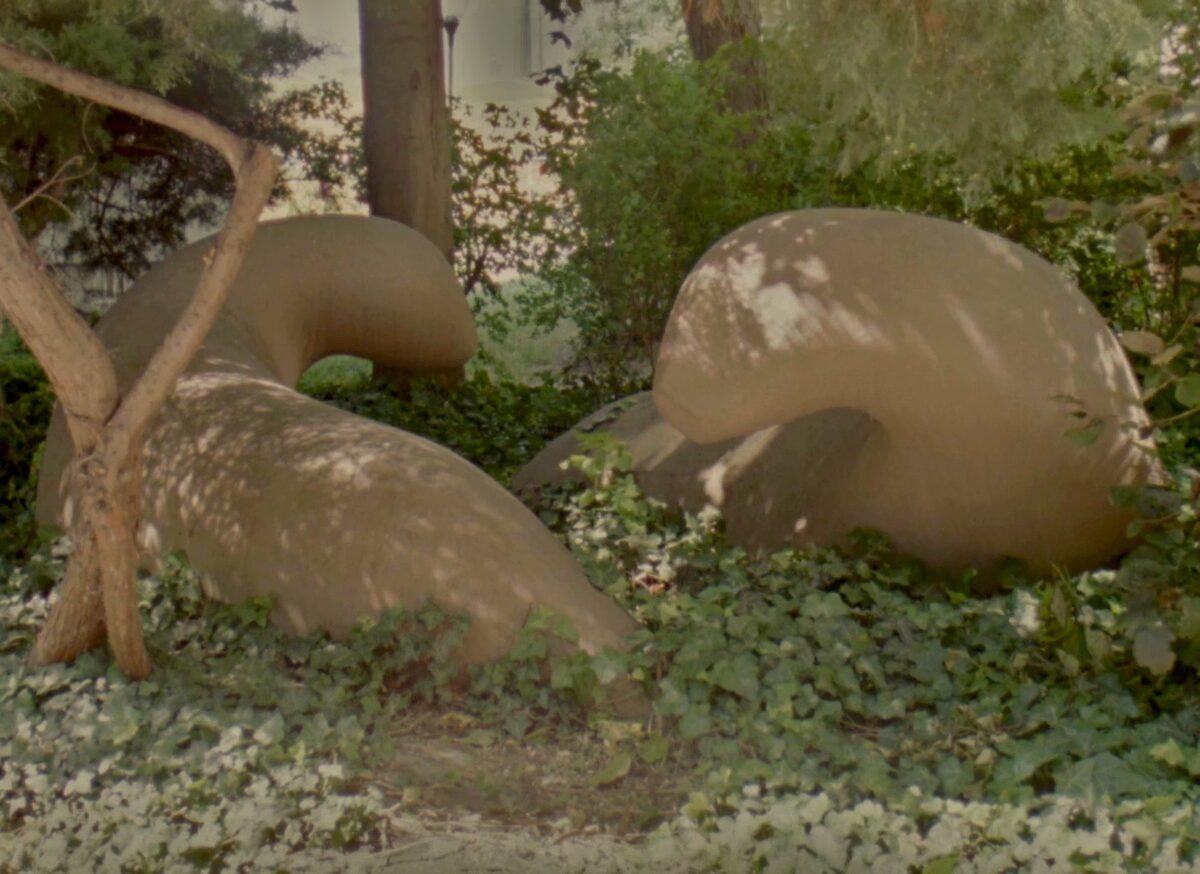
Remade: Hans Scheugl’s ‘Wien 1170, Schumanngasse’
Director, Cinematographer: Karl Wratschko
Producer: Karl Wratschko together with God’s Entertainment
Runtime: 2 minutes 40 seconds
Original Format: 16mm, b&w, silent
Screening Format: 16mm and DCP
With the support of the Cultural Department of the City of Vienna - MA7 and SHIFT III - Basis Kultur Wien
World premiere: International Short Film Festival Oberhausen (Distributors programme sickpackfilm)
SYNOPSIS:
January 1967: An inconspicuous alley in Vienna. A single tracking shot follows the alley from beginning to end. 53 years ago, Hans Scheugl shot Wien 17, Schumanngasse on a 30.5-meter roll of 16mm film, whereby the length of the roll is identical to the length of the tracking shot: 1.6 kilometeres in 2.5 minutes.
January 2020: The same inconspicuous alley in Vienna, another drive through Schumanngasse. Once again, the camera runs through a 30.5-meter strip of 16mm film. The speed is high. The first apparent conclusion: They were sure going fast back then.
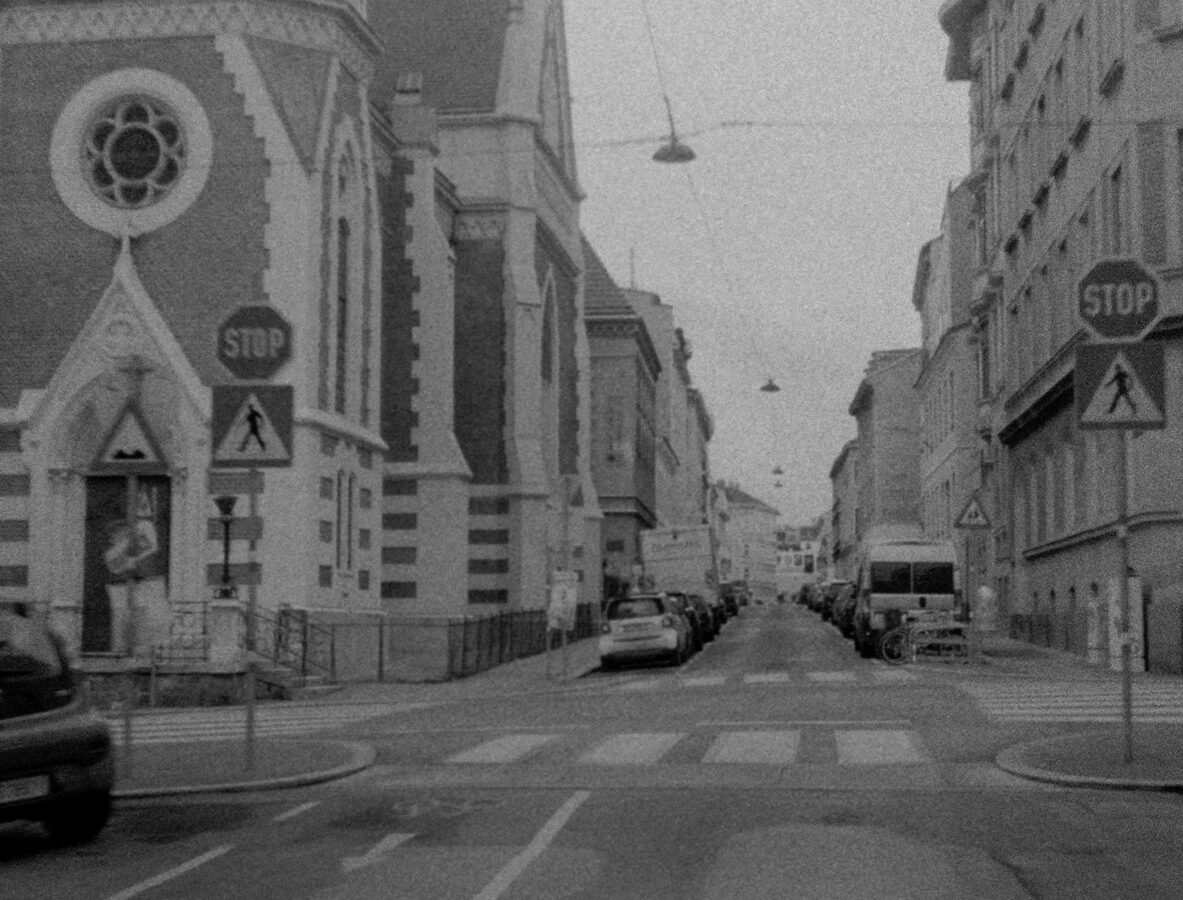
1I15
Directors, Producers, Cinematographers: Aleksandra Kolodziejczyk and Karl Wratschko
Voice-Over: Karolina Preuschl
Post-Production: Johannes Gierlinger
Runtime: 3 minutes 23 seconds
Original Format: 16mm, b&w, silent
Screening Format: 16mm and DCP
With the support of the Regional Government of Styria - CINEART and the Cultural Office of the City of Graz
World premiere: Kassel DokFest
In the city of Graz, about 94% of all streets named after significant individuals carry the names of men, while only 6% of the streets are named after women. The film 1I15 documents all locations in Graz named after women. One shot at a time, they enter the viewer’s field of vision, as we gradually draw ever closer to the city center. 1I15 is a kind of inventory, a contribution to an active culture of remembrance and gender equality as well as a critical examination of the representation of women in public space, which can also symbolically stand for other areas of society.
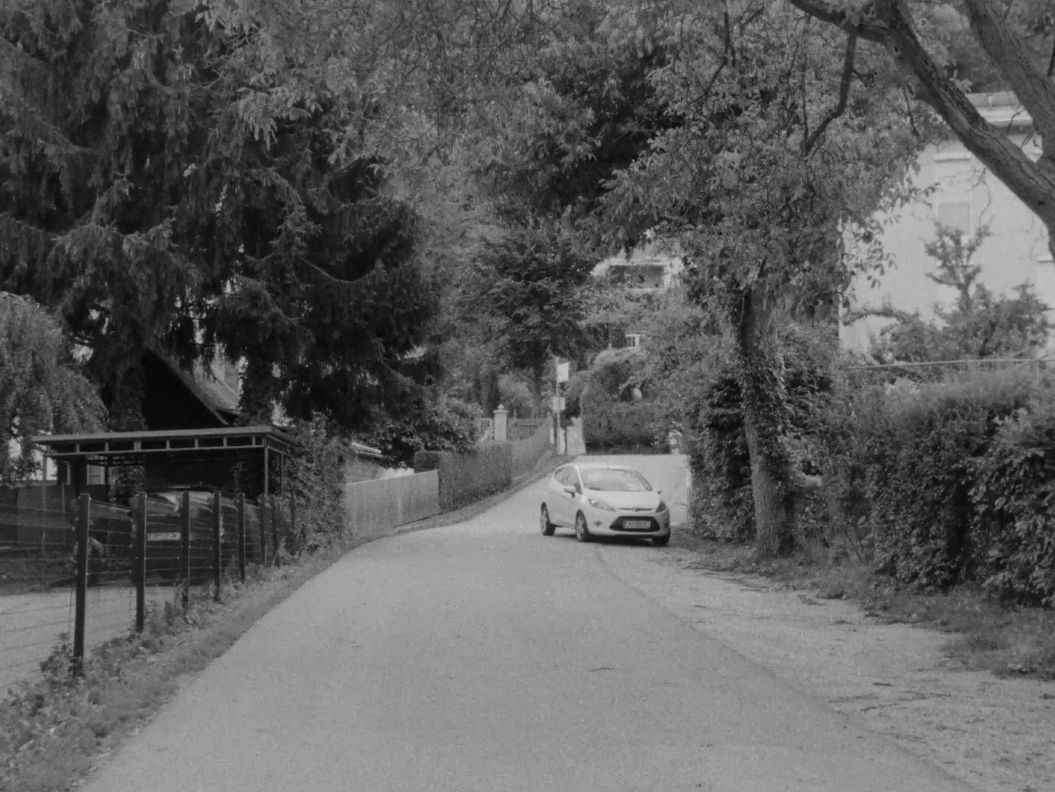
PRÄSENZ / PRESENCE
Directors, Producers, Cinematographers: Aleksandra Kolodziejczyk and Karl Wratschko
Post-Production: Johannes Gierlinger
Runtime: 6 minutes
Original Format: 16mm, b&w, silent
Screening Format: 16mm and DCP
With the support of the Cultural Department of the City of Vienna - MA7, Otto Mauer Fund, and the Future Fund of the Republic of Austria
World premiere: Kassel DokFest
Award: EXP:AN:DED SHORTS JURY AWARD at “This Human World” - International Human Rights Film Festival in Vienna
In most cities, women are severely underrepresented in the urban landscape — a far cry from gender parity. In Vienna, about 90% of all places and streets named after people bear the names of men. The film Presence brings Viennese locations named after women into view and closer to the awareness of the viewer. Similarly to what happens in our perception while we traverse public space, the 397 areas bearing women’s names flash up on the film screen one at a time, a single shot dedicated to each. The countdown effect in these shots, which begin at the periphery and move towards the city center, draws attention to the significance and distribution of places named after women. Presence is a kind of inventory, a contribution to an active culture of remembrance and gender equality as well as a critical examination of the representation of women in public space, which can also symbolically stand for other areas of society and reflect the reality of other cities.
